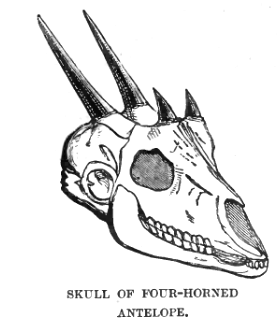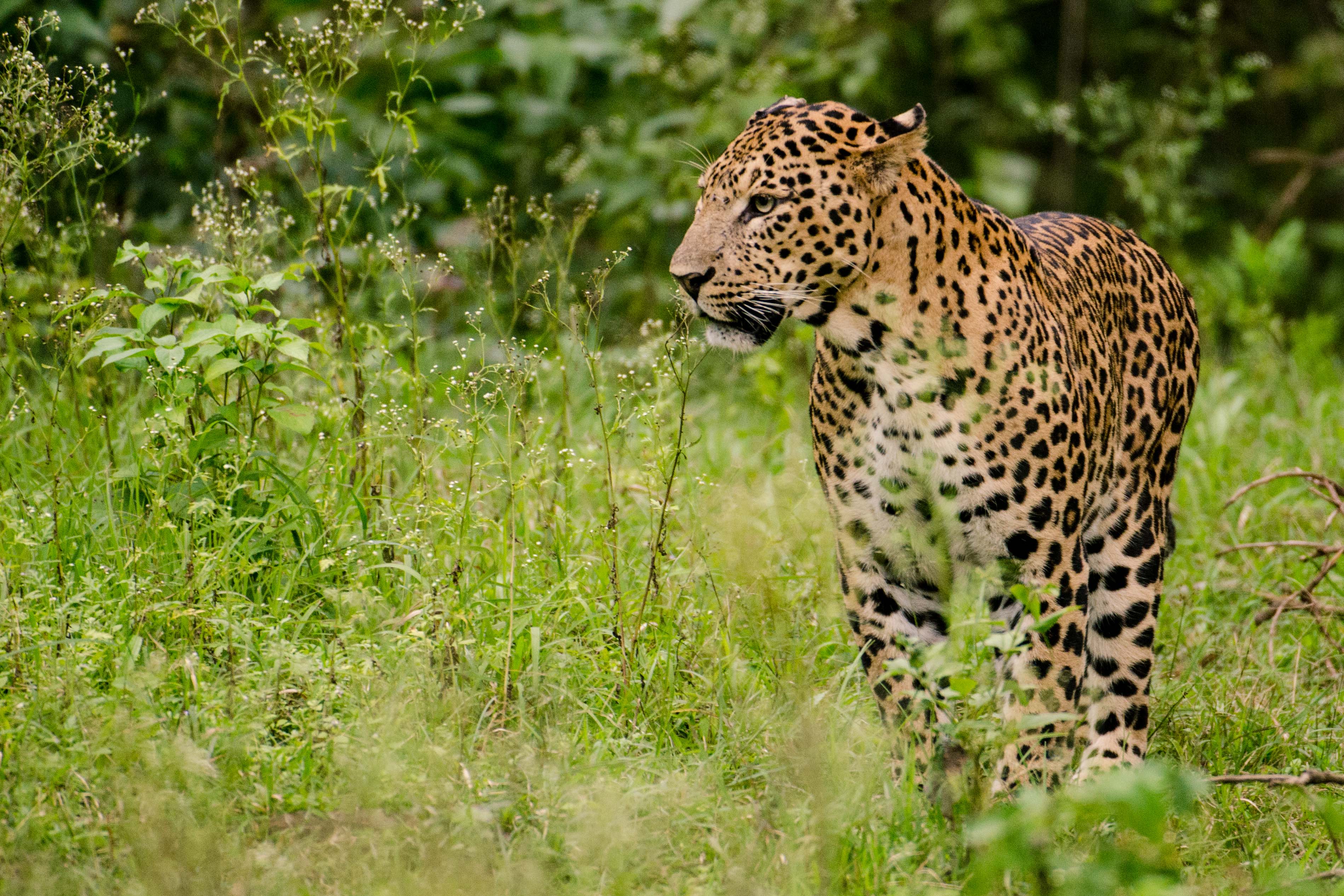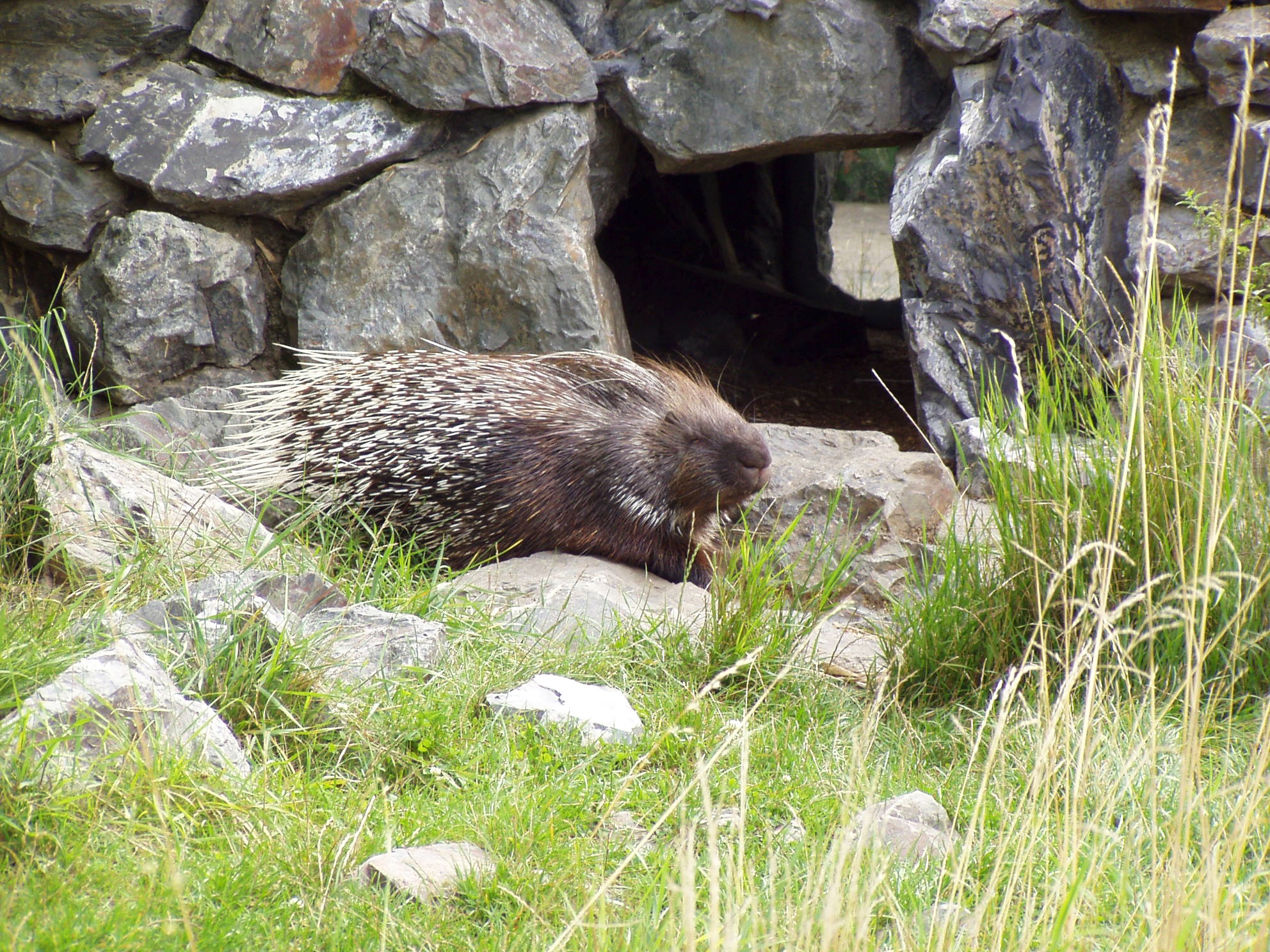|
Delhi Zoological Park
The National Zoological Park (originally Delhi Zoo) is a zoo in New Delhi, India. A 16th-century citadel, a sprawling green island and a motley collection of animals and birds, all in the middle of a burgeoning urban Delhi. The zoo can be seen on foot or using a battery-operated vehicle which can be rented at the zoo. Visitors are not permitted to bring any food other than drinking water, but there is a canteen in the zoo. The zoo is closed on every Friday and national holidays. History The Delhi zoo came decades later after New Delhi was built. although the idea to have a zoo at the national capital was mooted in 1951, the park was inaugurated in November 1959. In 1952 the Indian Board for Wildlife created a committee to look into creating a zoo for Delhi. The government of India was to develop the zoo and then turn it over to Delhi as a working enterprise. In 1953 the committee approved the location of the zoo, and in October 1955 it assigned N. D. Bachkheti of the Indian ... [...More Info...] [...Related Items...] OR: [Wikipedia] [Google] [Baidu] |
Delhi
Delhi, officially the National Capital Territory (NCT) of Delhi, is a city and a union territory of India containing New Delhi, the capital of India. Straddling the Yamuna river, primarily its western or right bank, Delhi shares borders with the state of Uttar Pradesh in the east and with the state of Haryana in the remaining directions. The NCT covers an area of . According to the 2011 census, Delhi's city proper population was over 11 million, while the NCT's population was about 16.8 million. Delhi's urban agglomeration, which includes the satellite cities of Ghaziabad, Faridabad, Gurgaon and Noida in an area known as the National Capital Region (NCR), has an estimated population of over 28 million, making it the largest metropolitan area in India and the second-largest in the world (after Tokyo). The topography of the medieval fort Purana Qila on the banks of the river Yamuna matches the literary description of the citadel Indraprastha in the Sanskrit ... [...More Info...] [...Related Items...] OR: [Wikipedia] [Google] [Baidu] |
Four-horned Antelope
The four-horned antelope (''Tetracerus quadricornis''), or ''chousingha'', is a small antelope found in India and Nepal. Its four horns distinguish it from most other bovids, which have two horns (with a few exceptions, such as the Jacob sheep). The sole member of the genus ''Tetracerus'', the species was first described by French zoologist Henri Marie Ducrotay de Blainville in 1816. Three subspecies are recognised. The four-horned antelope stands nearly at the shoulder and weighs nearly . Slender with thin legs and a short tail, the four-horned antelope has a yellowish brown to reddish coat. One pair of horns is located between the ears, and the other on the forehead. The posterior horns are always longer than the anterior horns, which might be mere fur-covered studs. While the posterior horns measure , the anterior ones are long. The four-horned antelope is diurnal (active mainly during the day). Though solitary by nature, four-horned antelopes may form loose groups of th ... [...More Info...] [...Related Items...] OR: [Wikipedia] [Google] [Baidu] |
Lion-tailed Macaque
The lion-tailed macaque (''Macaca silenus''), also known as the wanderoo, is an Old World monkey endemic to the Western Ghats of South India. Characteristics Lion-tailed macaques are covered in black fur, and have a striking gray or silver mane that surrounds their face which can be found in both sexes. The face itself is hairless and black, being pinkish in infants less than a year old. They are named not for their mane, but for their tail, which is long, thin, and naked, with a lion-like, black tail tuft at the tip. The size of their tail is about 25 cm (9.8 in) in length. Their eyes are a shade of hazelnut with highlighting black eyelids. Lion-tailed macaques, like other macaques, have deep cheek pouches useful for storing food, and are quadrupedal with opposable digits. The mane that surrounds its face gives this monkey its German name ''Bartaffe'' – "beard ape". With a head-body length of and a weight of , it ranks among the smaller macaques species. Offspring are bo ... [...More Info...] [...Related Items...] OR: [Wikipedia] [Google] [Baidu] |
Jungle Cat
The jungle cat (''Felis chaus''), also called reed cat, swamp cat and jungle lynx, is a medium-sized cat native to the Middle East, the Caucasus, South and Southeast Asia and southern China. It inhabits foremost wetlands like swamps, littoral and riparian areas with dense vegetation. It is listed as Least Concern on the IUCN Red List, and is mainly threatened by destruction of wetlands, trapping and poisoning. The jungle cat has a uniformly sandy, reddish-brown or grey fur without spots; melanistic and albino individuals are also known. It is solitary in nature, except during the mating season and mother-kitten families. Adults maintain territories by urine spraying and scent marking. Its preferred prey is small mammals and birds. It hunts by stalking its prey, followed by a sprint or a leap; the ears help in pinpointing the location of prey. Both sexes become sexually mature by the time they are one year old; females enter oestrus from January to March. Mating behaviour is ... [...More Info...] [...Related Items...] OR: [Wikipedia] [Google] [Baidu] |
Jaguar
The jaguar (''Panthera onca'') is a large cat species and the only living member of the genus '' Panthera'' native to the Americas. With a body length of up to and a weight of up to , it is the largest cat species in the Americas and the third largest in the world. Its distinctively marked coat features pale yellow to tan colored fur covered by spots that transition to rosettes on the sides, although a melanistic black coat appears in some individuals. The jaguar's powerful bite allows it to pierce the carapaces of turtles and tortoises, and to employ an unusual killing method: it bites directly through the skull of mammalian prey between the ears to deliver a fatal blow to the brain. The modern jaguar's ancestors probably entered the Americas from Eurasia during the Early Pleistocene via the land bridge that once spanned the Bering Strait. Today, the jaguar's range extends from core Southwestern United States across Mexico and much of Central America, the Amazon rainfo ... [...More Info...] [...Related Items...] OR: [Wikipedia] [Google] [Baidu] |
Indian Wolf
The Indian wolf (''Canis lupus pallipes'') is a subspecies of gray wolf that ranges from Southwest Asia to the Indian Subcontinent. It is intermediate in size between the Himalayan wolf and the Arabian wolf, and lacks the former's luxuriant winter coat due to it living in warmer conditions. Within this subspecies, the "Indian plains wolf" is genetically basal to all other extant ''Canis lupus'' apart from the older-lineage Himalayan wolf, with both proposed as separate species. The Indian wolf travels in smaller packs and is less vocal than other variants of the gray wolf, and has a reputation for being cunning. The Indian wolf is one of the most endangered populations of gray wolf in the world. Taxonomy The Indian wolf was first described to Western science in 1831 by the British ornithologist William Henry Sykes under the binomial ''Canis pallipes''. In 1941, Reginald Pocock subordinated it to ''Canis lupus'' under the trinomial ''Canis lupus pallipes''. Pocock, R. I. (1941 ... [...More Info...] [...Related Items...] OR: [Wikipedia] [Google] [Baidu] |
Indian Rhinoceros
} The Indian rhinoceros (''Rhinoceros unicornis''), also called the Indian rhino, greater one-horned rhinoceros or great Indian rhinoceros, is a rhinoceros species native to the Indian subcontinent. It is listed as Vulnerable on the IUCN Red List, as populations are fragmented and restricted to less than . Moreover, the extent and quality of the rhino's most important habitat, the alluvial Terai-Duar savanna and grasslands and riverine forest, is considered to be in decline due to human and livestock encroachment. As of August 2018, the global population was estimated to comprise 3,588 individuals, including 2,939 individuals in India and 649 in Nepal. Kaziranga National Park alone had an estimated population of 2,048 rhinos in 2009. Pobitora Wildlife Sanctuary in Assam has the highest density of Indian rhinos in the world with 84 individuals in an area of in 2009. Indian rhinos once ranged throughout the entire stretch of the Indo-Gangetic Plain, but excessive hunting and ... [...More Info...] [...Related Items...] OR: [Wikipedia] [Google] [Baidu] |
Indian Leopard
The Indian leopard (''Panthera pardus fusca'') is a leopard subspecies widely distributed on the Indian subcontinent. The species ''Panthera pardus'' is listed as Vulnerable on the IUCN Red List because populations have declined following habitat loss and fragmentation, poaching for the illegal trade of skins and body parts, and persecution due to conflict situations. The Indian leopard is one of the big cats occurring on the Indian subcontinent, along with the Asiatic lion, Bengal tiger, snow leopard and clouded leopard. In 2014, a national census of leopards around tiger habitats was carried out in India except the northeast. 7,910 individuals were estimated in surveyed areas and a national total of 12,000–14,000 speculated. Taxonomy ''Felis fusca'' was the scientific name proposed by Friedrich Albrecht Anton Meyer in 1794 who described a black leopard from Bengal that was on display at the Tower of London. ''Leopardus perniger'' proposed by Brian Houghton Hodgson in 18 ... [...More Info...] [...Related Items...] OR: [Wikipedia] [Google] [Baidu] |
Indian Elephant
The Indian elephant (''Elephas maximus indicus'') is one of four extant recognised subspecies of the Asian elephant and native to mainland Asia. Since 1986, the Asian elephant has been listed as Endangered on the IUCN Red List as the wild population has declined by at least 50% since the 1930s to 1940s, i.e. three elephant generations. The Asian elephant is threatened by habitat loss, degradation and fragmentation. Characteristics In general, Asian elephants are smaller than African elephants and have the highest body point on the head. The tip of their trunk has one finger-like process. Their back is convex or level. Indian elephants reach a shoulder height of between , weigh between , and have 19 pairs of ribs. Their skin colour is lighter than that of '' E. m. maximus'' with smaller patches of depigmentation, but darker than that of '' E. m. sumatranus''. Females are usually smaller than males, and have short or no tusks. The largest Indian elephant was high at the ... [...More Info...] [...Related Items...] OR: [Wikipedia] [Google] [Baidu] |
Indian Crested Porcupine
The Indian crested porcupine (''Hystrix indica'') is a hystricomorph rodent species native to southern Asia and the Middle East. It is listed as Least Concern on the IUCN Red List. It belongs to the Old World porcupine family, Hystricidae. Description The Indian crested porcupine is a large rodent, weighing . Their body (from the nose to the base of the tail) measures between with the tail adding an additional . The lifespan of wild Indian crested porcupines is unknown, but the oldest known captive individual was a female that lived to be 27.1 years old. It is covered in multiple layers of modified hair called quills, with longer, thinner quills covering a layer of shorter, thicker ones. The quills are brown or black with alternating white and black bands. They are made of keratin and are relatively flexible. Each quill is connected to a muscle at its base, allowing the porcupine to raise its quills when it feels threatened. The longest quills are located on the neck and shou ... [...More Info...] [...Related Items...] OR: [Wikipedia] [Google] [Baidu] |
Indian Hog Deer
The Indian hog deer (''Axis porcinus'') is a small deer native to the Indo-Gangetic Plain in Pakistan, northern India, Nepal, Bangladesh to mainland Southeast Asia. It also occurs in western Thailand, and is possibly extirpated from China (in southwestern Yunnan Province), Myanmar, Laos, and Vietnam. Introduced populations exist in Australia, as well as the United States (in Texas, Hawaii, and Florida), and Sri Lanka (where its native status is disputed). Its name derives from the hog-like manner in which it runs through forests (with its head hung low), to ease ducking under obstacles instead of leaping over them, like most other deer. Taxonomy ''Cervus porcinus'' was the scientific name used by Eberhard August Wilhelm von Zimmermann in 1777 and 1780, based on an earlier description of Indian hog deer brought to England from India. It was placed in the genus ''Axis'' by William Jardine in 1835 and by Brian Houghton Hodgson in 1847. In 2004, it was proposed to be placed in th ... [...More Info...] [...Related Items...] OR: [Wikipedia] [Google] [Baidu] |
Himalayan Black Bear
The Himalayan black bear (''Ursus thibetanus laniger'') is a subspecies of the Asian black bear found in the Himalayas of India, Bhutan, Nepal, China, and Pakistan. Description It is distinguished from '' U. t. thibetanus'' by its longer, thicker fur and smaller, whiter chest mark. During the summer, black bears can be found in warmer areas in Nepal, China, Bhutan, India and Tibet at altitudes of up near the timberline. For winter, they descend as low as , to more tropical forests. On average, they measure from nose to tail and weigh from , though they may weigh as much as in the fall, when they are fattening up for hibernation. Behaviour and ecology Diet They are omnivorous creatures (like most bears) and will eat just about anything. Their diet consists of acorns, nuts, fruit, honey, roots, and various insects such as termites and beetle larvae. If food is scarce, they may turn to eating livestock such as sheep, goats, and cattle. Breeding They reach sexual maturity at a ... [...More Info...] [...Related Items...] OR: [Wikipedia] [Google] [Baidu] |





.png)
.jpg)



